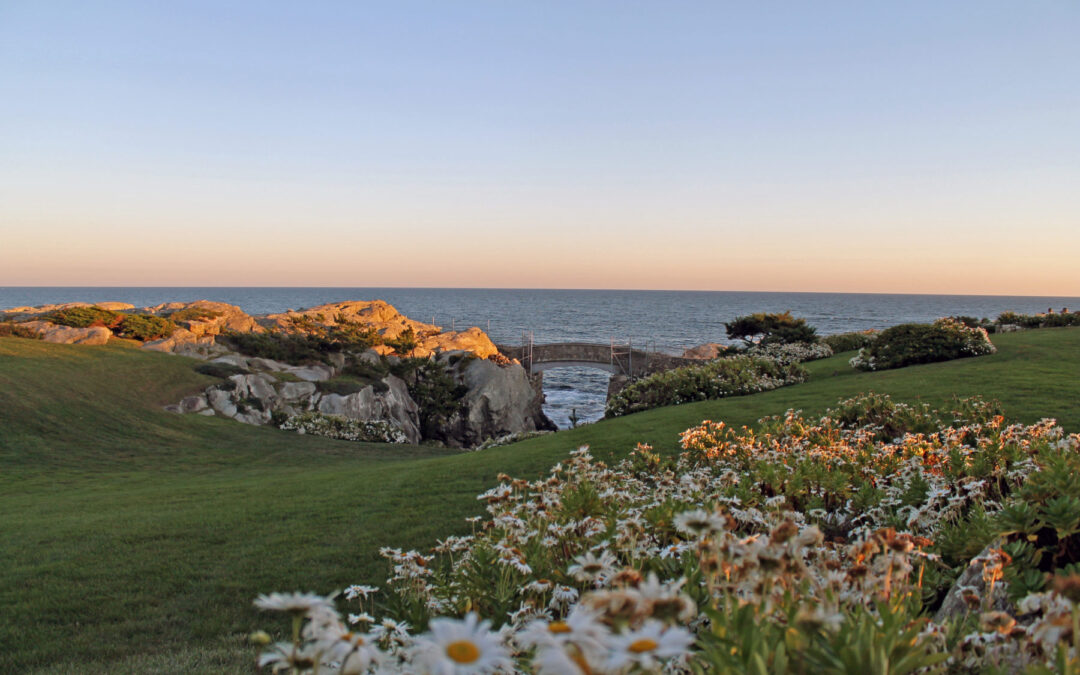
by NRF User | Sep 5, 2019 | NRF News
Newport Restoration Foundation celebrates the fall season with programs that include taking guests behind-the-scenes at our museums, bringing the community together at Prescott Farm, and discussing sea-level rise with our Newport and Nantucket neighbors. Please mark your calendars for upcoming special events including:
Second Sundays
September 8 & October 13 / 12:00 – 3:00 pm / FREE / Prescott Farm
Each month, NRF partners with a local organization to explore different topics related to Prescott Farm in the past and present. Explore the nature trails with our guest guides, chat up URI’s Master Gardeners, or climb inside the historic windmill – themes, guests, and activities change monthly!
September: Aquidneck Community Table hosts a pop-up farmers market
October: Aquidneck Stone Wall Initiative shares the lasting importance of stone walls on the island
Behind the Design–A Craftsman’s Tour of Newport Furniture
September 12 / 5:00 – 7:00 pm / $25 / Whitehorne House Museum
Join furniture maker Timothy Philbrick on a special tour of the Whitehorne House Museum’s exceptional collection of 18th-century, Newport Furniture. Mr. Philbrick will share his professional and artistic insights into the construction and design of these beautiful works of American Craftsmanship. Doors open at 5 pm, the tour will begin at 5:15 followed by time for Q&A. For more information on Mr. Philbrick please visit his website at www.timothyphilbrick.com.
Tackling Sea Level Rise through Digital Technology: Lessons Learned from the Resilient Nantucket Model
September 18 / 6:00 – 8:00 pm / Free / Innovate Newport, 513 Broadway, Newport, RI
Newport Restoration Foundation and the City of Newport’s Historic Preservation Department are pleased to co-host a lecture given by Morris (Marty) Hylton III, Director of the Historic Preservation Program at the University of Florida and Preservation Institute Nantucket. Hylton will share his one-of-a-kind 3D visualization of sea level rise in Nantucket and discuss how this work has contributed to a larger town-wide initiative to address the impacts of climate change on the community’s historic resources. The presentation promises to be thought-provoking and shed light on how small coastal communities can begin planning for climate change. The event is being offered free of charge. Space is limited, so please register by Tuesday, September 17 at noon. Visit newportrestoration.org/events for more information.
Closet Tour: Fantastic Plastics
September 19 / 5:00 – 7:00 pm / $15 / Rough Point Museum
Peek inside Doris Duke’s closet and the Rough Point costume collection. This expert-led experience will focus on pieces from the collection made from synthetic materials and all of the challenges historic plastics present to modern-day curators. Come see for yourself if Doris’ go-go boots and scuba suits have withstood the test of time.
Ask a Gardener
September 28 & October 26 / 11:00 – 11:30 am / Rough Point Museum
Free with house or grounds admission.
Tour the Rough Point grounds in the company of experts – once a month our estate gardeners share their expertise on a range of topics from plant identification to organic garden care. Get insider tips about how the Rough Point staff keeps the grounds looking lush and how to incorporate those practices in your own home garden. This program takes place outside and is weather dependent. Tours meet at the camels.
Newport Schools Night
October 24 / 5:00 – 7:00 pm / Rough Point Museum & Whitehorne House Museum
This event is free for Newport County students and their accompanying adults.
We invite all Newport County K-12 educators, students, and accompanying adults to Rough Point Museum and Whitehorne House Museum for a free night of fall fun and exploration. This is a special opportunity for students and families to experience NRF museums before the end of the season. There will be hands-on activities, inside and outside, to inspire and encourage learning beyond the classroom. All ages are welcome.
For information on all events, visit newportrestoration.org/events.
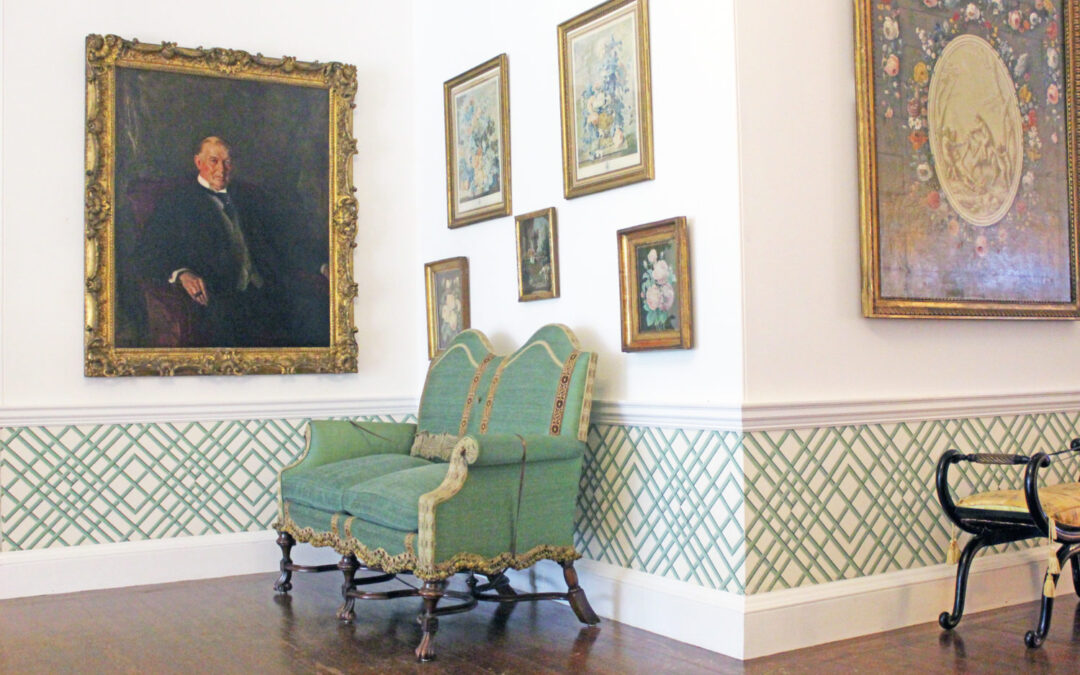
by NRF User | Aug 7, 2019 | NRF News
On the morning of my first day at NRF as the Laird Museum Studies Intern, I nearly missed my exit. When I pulled onto the I-95 South ramp from Providence, I realized that if I just kept driving, the interstate would take me all the way down the Eastern Seaboard to North Carolina. In just a couple days on the road, I could walk through Duke University’s campus, the magnificent Gothic wonderland that I call home; I could be reunited with my friends working in Durham for the summer; I could return to my regular campus job at the Rubenstein Rare Book & Manuscript Library. Restless with first-day jitters and unsure what my summer in Newport might hold, I must admit I was tempted by the absurd idea to just keep driving.
Never fear—I made it to work on time. For a student interested in museum work and public history, a summer internship at a place like Rough Point is kind of the dream. It doesn’t hurt that Rough Point belonged to the Dukes, the family that gave both their name and their generous financial support to the university I love so dearly. My first week I was tasked with familiarizing myself with Newport history, NRF’s mission, and the incredible collections at all of our public properties. I took this instruction to mean marveling at the beautiful gardens, spectacular handcrafted furniture, and priceless artwork at both Whitehorne House and Rough Point Museums. It shouldn’t have surprised me that Doris Duke’s home is full to bursting with reminders of Duke University, but to my delight, I am discovering that these two places are connected in more than name.
The first of these reminders waits in Rough Point’s kitchen, tucked against the wall to the right as one comes through the doorway. It certainly was not the first thing I noticed—that was the view, a glorious vista of sun, sea, and stone. And compared to the large hearth and polished refrigerator, the two-foot-tall box covered in plain white porcelain tiles can seem unremarkable. But this rectangular chest is a cigar humidor, an appliance that holds the key to the fortune that helped create both Rough Point and Duke University.[1]
James B. Duke transformed his father’s business into the supremely successful American Tobacco Company, which at one time produced 90% of the tobacco products sold in the United States.[2] Mr. Duke had expanded the enterprise enough to withstand the Sherman Anti-Trust Act—Duke Energy is the most well-known example of this diversification—and he continued as one of the richest men in the world for the rest of his life. In 1924 he established the Duke Endowment, a $40 million trust fund created to support several Southern hospitals, churches, and schools, including Trinity College, which was promptly renamed in honor of the Duke family. $19 million was made immediately available for the construction of the university’s new campus, and at Mr. Duke’s death in 1925, he bestowed an additional $67 million to the Duke Endowment.[3]
After his charitable donations, the bulk of the Duke fortune was left to his only child, Doris, who was just twelve years old. The “richest little girl in the world” grew up to continue her father’s legacy, both in philanthropy and collecting artwork to fill houses like Rough Point with priceless treasures. The seemingly-unremarkable cigar humidor, tucked into the corner of the kitchen, is a concrete reminder of the tobacco industry and fortune that made places like Rough Point and Duke University possible.
There are plenty of other connections to Duke, too many for a single blog post. There are names printed on signs at Rough Point that I recognize from my research into the construction of Duke University with the Franklin Humanities Institute last summer: Horace Trumbauer’s architectural firm designed both James and Nanaline Duke’s modifications to Rough Point and Duke University’s West Campus; Frederick Law Olmsted orchestrated the beautiful landscaping at Rough Point and his sons continued his legacy with their designs for Duke’s campus.[4],[5]
The list continues: the magnificent 16th century tapestries hanging in Rough Point’s dining room used to hang in the reading room of the Duke University library.[6] James B. Duke’s portrait displayed at the top of the main stairs at the museum is identical to his portrait hanging in the Gothic Reading room— and also matches the stance of his statue at the center of Duke’s Abele Quad, complete with cigar in hand.[7] Upstairs, the exhibit “Beyond Fortune: The Life & Legacy of Doris Duke” features a photograph of the Duke Tobacco Company storefront that I recognize from the University Archives.[8] No matter which room of the house or part of the gardens I may be strolling through, it seems that Duke University is never too far away.
Whenever I get on I-95 South, I still think about how the interstate could take me right back to Durham. Or, I could continue with my commute, cross the Claiborne Pell Bridge, and walk through the house where reminders of the school that I call home wait for me around every corner.
Gretchen Wright is the Emily A. Laird Museum Studies Intern for the summer, as well as a rising senior at Duke University studying English and Classical Studies. Come to Rough Point, Whitehorne House Museum, or Prescott Farm and ask her about Duke! She can’t wait to discuss Gilded Age mansions, historical preservation, and the highs and lows of college basketball with you.
[1] https://www.newportrestoration.org/room/kitchen/; http://newportalri.org/items/show/18388
[2] Patrick G. Porter, “Origins of the American Tobacco Company,” The Business History Review 43, no. 1 (1969): 1.
[3] William E. King, “Duke University: A Brief Narrative History,” Duke University Archives, accessed 11 June 2019, https://library.duke.edu/rubenstein/uarchives/history/articles/narrative-history.
[4] “History of Rough Point,” Newport Restoration Foundation, accessed 11 June 2019, https://www.newportrestoration.org/roughpoint/history/.
[5] Mark Hough, “Duke Landscape Designed by Landscape Architecture Greats,” Duke Today, 25 April 2012, https://today.duke.edu/2012/04/landscapemonth.
[6] http://www.newportalri.org/items/show/18377; https://www.newportrestoration.org/room/dining-room/
[7] http://newportalri.org/items/show/7029
[8] https://www.newportrestoration.org/exhibit/beyond-fortune/
Photos courtesy of Doris Duke Charitable Foundation Historical Archives, David M. Rubenstein Rare Book & Manuscript Library, Duke University, Durham, North Carolina.
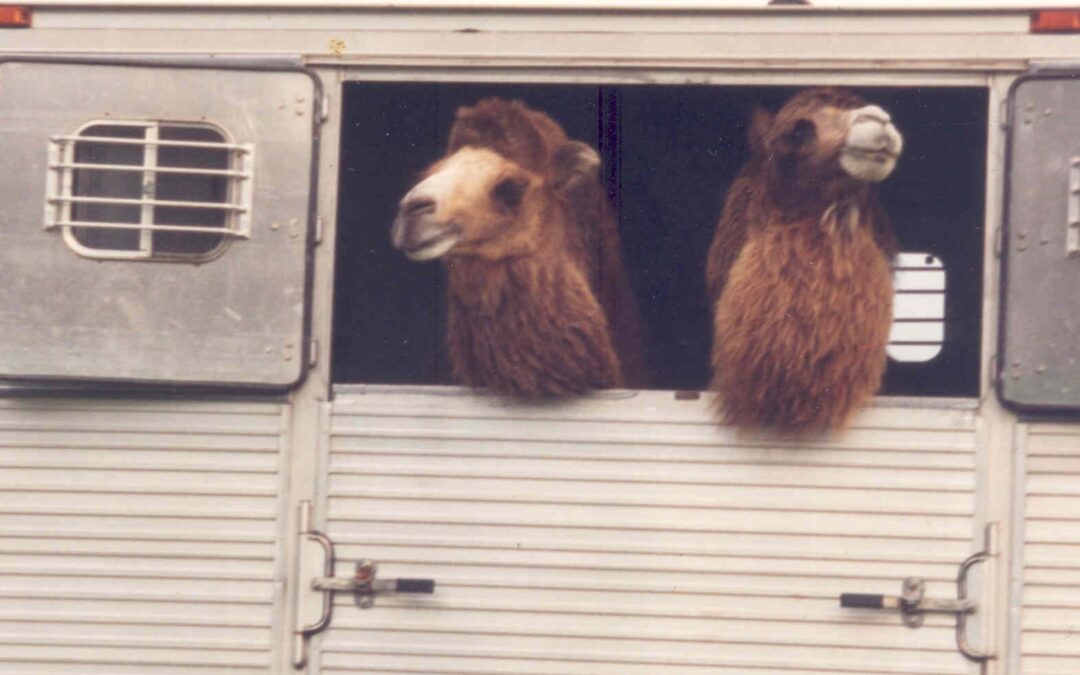
by NRF User | Jul 17, 2019 | NRF News
You asked and we’re answering! In our interactive talk back section of the Beyond Fortune: The Life & Legacy of Doris Duke exhibition at Rough Point, so many of you wanted to know more about Doris Duke’s camels.
Princess and Baby, Doris’s Bactrian camels, were born in 1987 and came to live with her in Newport in 1988. They enjoyed the summer months here on the back lawn of Rough Point and winter months in a heated stable at Duke Farms in New Jersey. Rumor has it that they also enjoyed eating graham crackers!
One of the most common questions we received was, “What happened to the camels?”
After Doris Duke passed away in 1993, Princess and Baby retired to Duke Farms. Princess eventually moved to Popcorn Park Zoo, an animal sanctuary in Forked River, New Jersey.
Another frequently asked question was, “What did Princess and Baby eat?”
Staff at Rough Point would be responsible for the care and feeding of the camels—Princess and Baby also took vitamins. Here is an inventory of supplies used by the camels in 1993:
Feed Supplies
75 bales of hay
45 bags of shavings
10 bags of omolene
Feeding Schedule
Feed the camels two times a day 7am—7pm
1 scoop for Baby
1 scoop for Princess
Vitamin E – one ounce each in their grain, once a day
Have you seen the living statues of the camels on the front lawn? Both are a tribute to Princess and Baby. The frames of the camels are made of steel rebar and are covered with chicken wire. Zip ties hold sphagnum moss in place. The plants—mostly sedums and hens-and-chicks—are overwintered on the camels. In the spring, some new plants are added.
Come see Beyond Fortune to leave your own questions for us about Doris Duke and Rough Point, and don’t forget to take a #camelgram while you’re here!
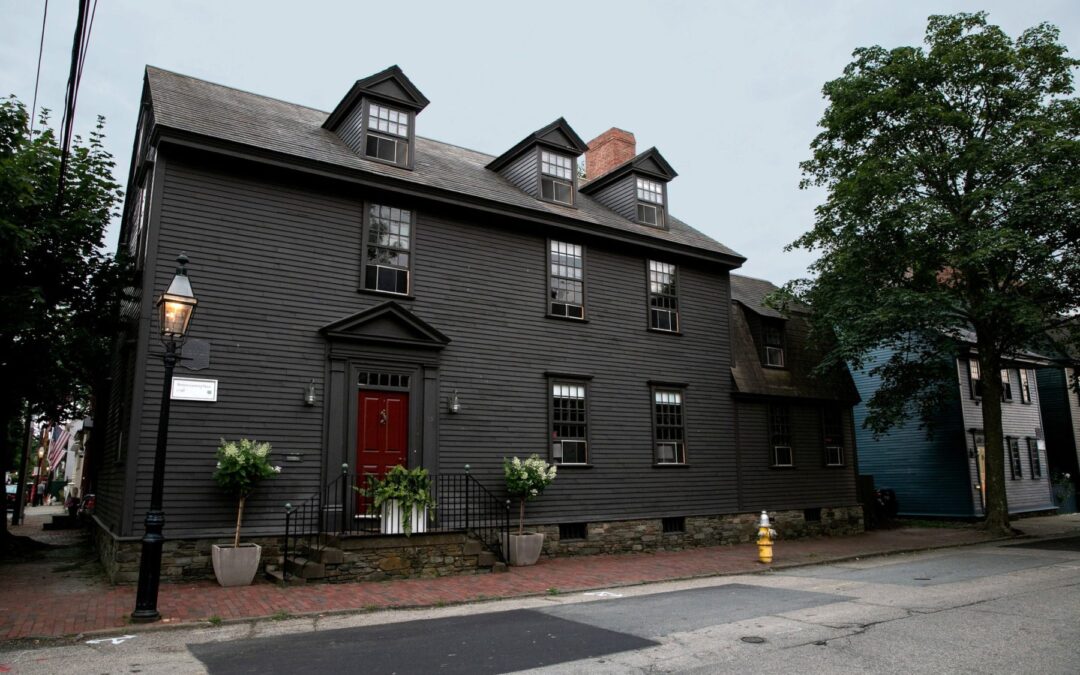
by NRF User | Jul 9, 2019 | NRF News
“Doris Duke did a wonderful thing fifty-some years ago when she preserved these Colonial houses,” he said. “Here we are 50 years later, and it is our responsibility to ensure that the work she did is not lost. To do for Newport a second time what she did for Newport the first time — to save these Colonial properties.” – Mark Thompson, Executive Director, Newport Restoration Foundation
Many thanks to The New York Times for spotlighting the efforts NRF and many others are taking to Keep History Above Water in their piece, ‘We Cannot Save Everything’: A Historic Neighborhood Confronts Rising Seas.
Click here to read the article online.
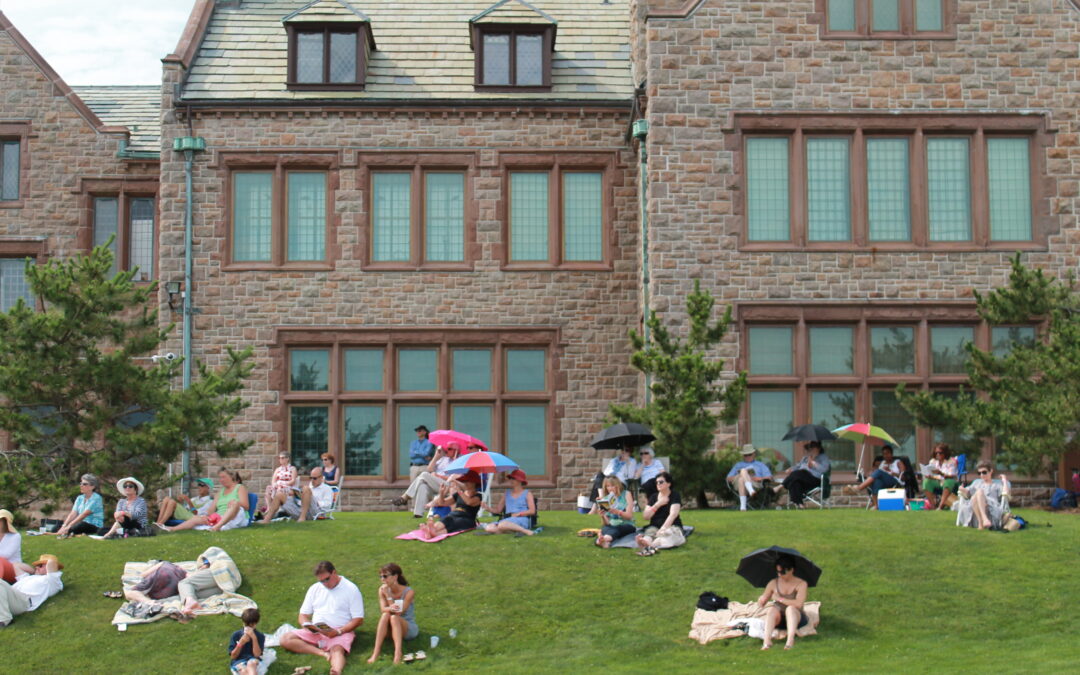
by NRF User | Jun 25, 2019 | NRF News
From Rosé with the Roses, to Jazz on the Lawn, we have something for everyone this summer at NRF! Rough Point Museum, Whitehorne House Museum, and Prescott Farm will offer a variety of free and ticketed programs for all ages and interests. Please mark your calendars for upcoming special events including:
Rosé with the Roses
July 10 / 5:00 – 7:00 pm / $25 / Rough Point Museum
Rough Point’s rose allée bursts into full bloom for a few days every July. Savor this brief and breathtaking event with a glass of rosé in hand. The museum’s exhibits and grounds will be open for strolling. Price includes admission to the museum and one drink ticket. Please note that this program is weather dependent.
Second Sundays
July 14 & August 11 / 12:00 – 3:00 pm / FREE / Prescott Farm
Community comes together to enjoy the largest public open space on Aquidneck Island. Each month NRF joins with a non-profit partner to highlight the expansive history and horticulture of Prescott Farm. Explore the nature trails with our guest guides, chat up URI’s Master Gardeners, or climb inside the historic windmill – themes, guests, and activities change monthly!
July: Middletown & Portsmouth Historical Societies shed light on Prescott’s Capture
August: Gray’s Grist Mill takes us from seed to Johnnycake
The Myth & Mystique of Doris Duke in Newport
July 16 / 5:00 – 7:00 pm / $15 / Rough Point Museum
Almost every Newporter with a long enough memory has a story about Doris Duke. Special guests, including former staff and friends, recount their experiences, and we hope you bring your own recollections to share at this casual event that examines the legends and lore of Doris’s time in Newport.
Creative Survival: African Artisans in Newport
July 22 / 5:00 – 7:00 pm / $15 / Rough Point Museum
Newport was the most active slave port in the British North American colonies, and many of the enslaved Africans who arrived here were placed into training in the artisan trades, including furniture making. This presentation by the 1696 Heritage Group will explore how these African craftsmen and women contributed to colonial Newport’s economic and cultural prosperity.
Jazz on the Lawn
July 24 / 5:00 – 7:00 pm / $15; 12 and under free! / Rough Point Museum
A night that celebrates Doris Duke’s lifelong affinity for jazz music. Join us for an evening of picnic blankets, ocean breezes, and soulful tunes that recalls the early years of the Newport Jazz Festival when Doris was known to bring musicians back to Rough Point for informal musical performances. Featuring Joe Albano and the Jazz Lords, this program will take place outside. In the event of rain, our alternate date will be July 31.
Ask a Gardener
July 27 & August 31 / 11:00 – 11:30 am / Rough Point Museum
Free with house or grounds admission.
Tour the Rough Point grounds in the company of experts – once a month our estate gardeners share their expertise on a range of topics from plant identification to organic garden care. Get insider tips about how the Rough Point staff keeps the grounds looking lush and how to incorporate those practices in your own home garden. This program takes place outside and is weather dependent. Tours meet at the camels.
Creative Survival Installation
July 29 / 5:00 – 7:00 pm / $20 / Whitehorne House Museum
The 1696 Heritage Group takes over Whitehorne House Museum for one night only, telling the stories of the enslaved and free Africans who worked in the artisan trades in colonial Newport. Public historians Theresa Guzman and Keith Stokes lead this small group experience and invite us to see the museum and its furniture collection through the lens of African artisans and their contributions to Newport’s “Golden Age.”
Rough Point Plant Sale
August 3 / 9:30 am – 12:30 pm / Rough Point Museum
You’ll want to save some space in your garden for this sale! Our estate gardeners have culled over 400 perennials from Doris Duke’s historic gardens, and this is your chance to plant a little bit of history in your home garden. One-gallon, five-gallon, and baby plants already rooted in soil will be priced to sell. This program takes place outside and is weather dependent. A rain date is set for August 10.
Floral Design Workshop
August 3 / 10:00 am – 12:00 pm
August 22 / 3:00 – 5:00 pm
$40; advance registration required / Rough Point Museum
Take home a one-of-a-kind reminder of Rough Point’s gardens. Led by estate gardener and floral designer Alyssa Leach, this workshop is for novices and experts alike and borrows inspiration from Doris Duke’s historic flower gardens. Materials included, and participants will each take home a mixed arrangement of their own design.
The Myth & Mystique of Doris Duke’s Inner Circle
August 8 / 5:00 – 7:00 pm / $15 / Rough Point Museum
Most people came to know Doris Duke through newspaper headlines and paparazzi images, but who did Doris count among her close friends and confidantes? While Doris’s name was connected to other celebrities like Andy Warhol, Imelda Marcos, and Jackie Onassis, those who knew her best are less well-known. Join us as we unveil the most intimate and influential relationships in Doris’s life.
Midsummer Celebration
August 13 / 5:00 – 7:00 pm / FREE / Whitehorne House Museum
Celebrate the reopening of Newport’s furniture museum by picking out your new favorite piece of early American furniture or rediscovering the fun of Legos and Tinker Toys. Light refreshments provided in the museum’s colonial revival garden.
For information on all events, visit newportrestoration.org/events.
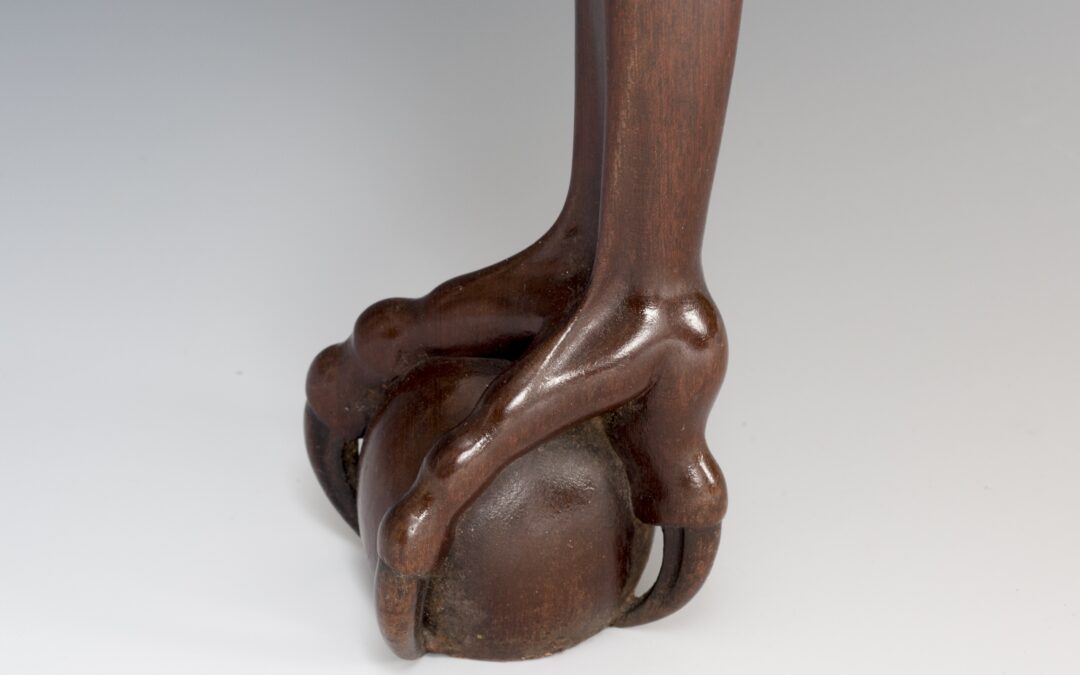
by NRF User | May 16, 2019 | NRF News
Ever since I took on the post of Director of Museums, I have had to learn a lot of information about a lot of different things, from how to get into our offices at Rough Point without setting off the alarm, to an understanding of the life and legacy of Doris Duke. I have also spent a fair amount of time learning about the collection and interpretation of NRF’s museum at the Whitehorne House, which, when it reopens on May 29th, 2019, will be the world’s only museum dedicated solely to the craft, design, and social and cultural histories of 18th-century Newport furniture.
Learning about Newport furniture has become one of my newest passions. I have become fascinated by the design, construction, and history behind these exceptional works of American craftsmanship. I haven’t always felt this way. Like many of you, I had never really thought much at all about historic furniture, let alone been engrossed in learning about the craft and history behind it. But over the past few months, I have come to see that the Whitehorne House Museum’s furniture collection is filled with remarkable works from a world of design and consumerism that, despite their significant age (most pieces are about 250 years old or more), feels quite familiar to me, quite contemporary, and, perhaps surprisingly, relevant to the lived experience of 21st-century people. I get that readers may not see the ways in which Newport furniture and its creation and purchase are analogous to the behaviors of a contemporary consumer, but if you stick with me through this blogpost, I think you’ll see the connection. Let me explain through a brief exploration of feet. You read that right, feet.
The feet I’m referring to are, of course, furniture feet—the base of a piece of legged furniture, such as a desk, table, high chest, or chair. They are, quite literally, the lowest point on any work of furniture, so low and obscure that most of us don’t even pay attention to them. In fact, many pieces of furniture have no distinct feet at all. Their legs simply extend to the floor without a break. That is surely the case with the chair that I am sitting in as I write this piece, and it is equally true of most of the furniture in my office and my home. My office and home furnishings, however, are not works of 18th-century Newport furniture. Would that they were.
Feet on a piece of legged, 18th-century Newport furniture are frequently amazing works of craftsmanship and artistry in their own right. Some are delicately sculpted to look like a human’s foot inside of a slipper, while my favorite feet are intricately carved to look like the claw on a bird of prey clutching a ball.
This last form, the ball and claw, was, interestingly enough, influenced by the early development of a global, consumer economy, a phenomenon that, while not identical to our contemporary world, shares similarities with the consumer society that we live in today. In the late 1600s, China opened trade with select foreign traders, including those from England. As Chinese goods entered the English market, English craftsmen became familiar with a popular Chinese decorative motif, the dragon holding a pearl. Most scholars believe that this design informed the creation of the ball and claw foot. By the early 18th century, this Chinese-inspired, decorative motif became very popular in England, and since consumer tastes in England influenced consumer tastes in the British colonies in America, the ball and claw became a very popular feature in American furniture. By the mid-18th-century, the ball and claw was one of the defining characteristics of the Newport style of furniture.
It is worth noting that there is no structural advantage to the slipper or ball and claw foot. One might just as easily purchase a piece with no distinct feet at all and their furniture would stand just as well or poorly. Still, 18th-century Newport craftsmen took the time to carve such details, no small accomplishment since contemporary furniture maker, furniture historian, and NRF friend Jeffrey Greene tells me that this process could take four days or more in the midst of a tight, seven week production schedule. Greene further notes that the 100 plus cabinet makers who built Newport furniture in the 18th century were not artists, per se. That is to say, they did not carve such intricate details solely for the sake of personal expression. They were, instead, artisans, craftsmen of tremendous skill in a community of 300 or so interrelated craftspeople, all of who were trying to make a living creating products in a system of pre-industrial, commercial production. Naturally, appealing to consumer tastes was an essential part of their business practice.
The widespread distribution of such furniture in and outside of Newport makes clear that 18th century consumers of Newport furniture liked the intricately carved feet that came to characterize the Newport style. At the very least we can say that consumers of the period knew such carvings were in fashion and that they had an interest in appearing to be fashionable. As the historian Margaretta Lovell has observed, consumers of 18th-century Newport furniture, and guests who viewed such pieces in their neighbors’ homes, experienced a sense of admiration for the objects “in both senses [of the word]—straightforward pleasure…and covetous desire.”
This 18th-century desire for the fashionable over the merely serviceable is also one of the defining characteristics of our own consumer society. After all, what is the difference between the beautiful, but ultimately non-essential, ball and claw foot and the equally non-essential Gs on a pair of Gucci sunglasses or the trademarked red sole on a pair of Christian Louboutin shoes? Nothing, really. After all, the decorative Gs do not help to reduce the influence of the sun’s rays (or, as so often happens, keep you from losing your sun glasses) nor does the Louboutin red sole make it easier to walk in a pair of stiletto heels. Both products simply appeal to the consumer’s sense of or interest in the latest style and fashion, just like the ball and claw foot did in the 18th century.
Sort of…. After all, one of the notable differences between these 21st and 18th century examples of consumerism is the level of craftsmanship. While 21st century, machine-produced, high end brands may feature very fine construction in their own right, they surely cannot compare with the remarkable detail of hand carved ball and claw feet, which are a distinct and unique product of the individual carver. Indeed, as Jeffrey Greene notes in his fascinating book, American Furniture of the 18th Century, “No two makers carved feet exactly the same way, so an individual carver’s work was as unique as a signature.”
So what do we learn from this brief study of feet? I believe that we’ve learned about the development of an 18th-century global marketplace and its influence on style and fashion, as well as the growth of manufacturing and consumer sectors in and around Newport that were keenly aware of these developments and used them to guide their production and consumption choices. While these facts are not identical to our own consumer society—which includes a global production and distribution network and an ever-present advertising industry to instruct consumers on what is and is not in fashion and convince them that their mere wants are actual needs—they are similar enough that we as 21st century consumers can recognize them as familiar and somewhat contemporary. At least, that’s what I believe. What do you think? You can let us know on social media, or better yet, tell us in person at the Whitehorne House Museum.
I sincerely hope that you can visit us at Whitehorne House this summer to see some of our collection of 18th century, Newport furniture. The pieces on display are examples of extraordinary beauty, and, as I hope I’ve made clear, they have important stories to tell us about American history—from the history of colonial consumerism to the ways in which such beauty was indebted to the ugly and horrific colonial slave trade, to the integral role that family and kinship played in the production and sale of these works and beyond.
The museum season will run from May 29th to October 27th. Whitehorne House Museum will be open to the public Wednesday through Sunday from 10:00 am – 4:00 pm. Tickets will cost $15 for adults, $5 for students, and will be free for children twelve and under and for residents of Newport County. Visitors can purchase a combined ticket to visit Whitehorne House and NRF’s museum at Rough Point, the Newport home of Doris Duke, for $25, a $10 savings. Click here to plan your own visit today!
By Dr. Erik Greenberg, Director of Museums, Newport Restoration Foundation






